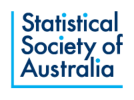Propensity score techniques in multiple treatments framework: the estimation of neighbourhood effect
The speaker for the September branch meeting was Margherita Silan, who is a postdoctoral research fellow at Padua University. Margherita was the winner of the Italian Statistical Society annual award for best PhD in Applied statistics. Her research interests include causal inference in multiple treatment frameworks, composite indicators and partially ordered set theory. Margherita’s research involved the estimation of the neighbourhood effect using propensity score techniques in a framework with many treatments, with an application to two health outcomes in Turin.
The neighbourhood effect is the independent causal effect of a neighbourhood on health and/or social outcomes. In order to compare the neighbourhood effect, it is important to make neighbourhoods comparable with respect to confounders. The Turin longitudinal study was used as the data source and outcomes considered were hospitalised fractures and incidence of depression or dementia. Neighbourhoods in Turin were represented as treatments, with at least 10 neighbourhoods included, depending on the partition methods.
Magherita compared two methods to estimate the neighbourhood effect; inverse probability of treatment weighting (IPTW) for multiple treatments and logistic regression with dummy indicators for neighbourhoods as covariates in the model. Simulations were performed to compare the methods with fracture as the outcome. Performance of the two methods depended on the scenarios simulated.
The neighbourhood effect was estimated for the outcome of dementia or depression using IPTW. An effect on mental health with respect to the mean was found, which was protective or harmful depending on the neighbourhood and gender. Based on her results, Magherita proposed a novel method: Matching on Poset based Average Rank for Multiple Treatments (MARMoT). The average rank summarises individual characteristics which are important for treatment allocation and is used as a tool to improve the balance of covariates between groups through matching. She described how to use the tool to achieve covariate balance and performed a simulation study to evaluate its performance. MARMoT improved covariate balance for 70 neighbouring zones in Turin and the average treatment effect in the treated changed considerably for many neighbourhoods.
The talk concluded with a Q & A session, including suggestions for future collaboration and requests to share her code.
By Lan Kelly
